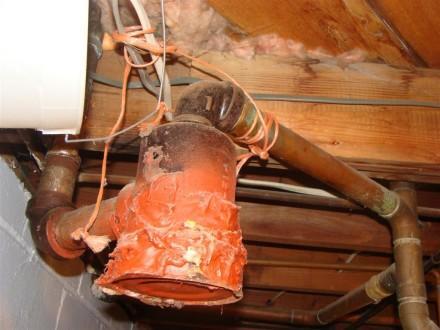Many older houses in Minneapolis and Saint Paul have an old style of plumbing trap called a drum trap, which is no longer allowed in Minnesota except in special circumstances. The photo below shows an example of a relatively small drum trap found below the bath tub at a recent home inspection in Hopkins.

Drum traps come in all different types of shapes, sizes, and configurations. The crude diagrams below show a few examples of different types of drum traps I've come across, as well as one type of setup that wouldn't create a water seal trap, shown at the bottom right.
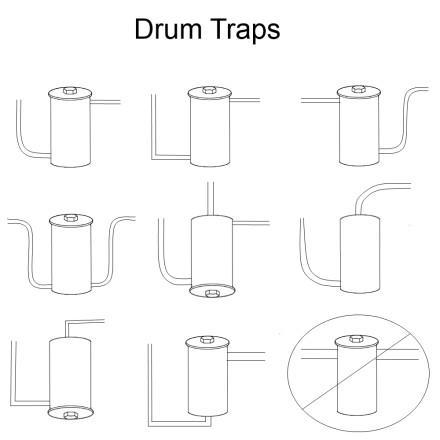
As mentioned in previous posts, the purpose of a plumbing trap is to prevent sewer gases from coming in to a building. A drum trap does the same thing, but instead of just having a dip in the pipe to create a P-trap, a drum trap consists of an enlarged 'vessle' that holds a large volume of water. In the Twin Cities, drum traps were commonly used at bath tubs and occasionally at laundry sinks.
Why they used to be popular
In my posts about s-traps and plumbing vents, I explained how proper plumbing vents prevent water from getting siphoned out of traps and why it matters. Water can be siphoned out of a drum trap in the same way it can be siphoned out of a p-trap or s-trap, but drum traps hold so much water that it's pretty much impossible to have enough water siphon out to allow sewer gas in to the home.
Drum traps were also supposed to be easier to open up for cleaning and retrieving lost items, but it didn't always work that way. I'll come back to this.
Why they're no longer allowed*
One of the basic plumbing principals of the Minnesota State Plumbing Code (4715.0200, "s") says that "Each fixture shall be provided with a separate, accessible, self-scouring, reliable trap placed as near to the fixture as possible." If you take apart any properly installed p-trap, you'll probably find that it's nice and clean inside; this is because it's self-scouring. The water drains through the trap in such a manner as to pull solid materials out of the trap along with the water.
The main problem with drum traps is that they're not self-scouring. A drum trap holds so much water that the water and solids coming in to the trap will not be pulled directly through, which can allow for the accumulation of solids in the bottom of the trap. This makes drum traps more prone to getting clogged.
Another problem with drum traps is that they can be difficult to clean out. Most drum traps have a removable cover, but drum traps are usually located right below the floor, making the lid extremely difficult to access without cutting out the floor. At my last house in Minneapolis, there was a removable panel in the floor created just for accessing the drum trap.
Even when the cover is accessible, it can be difficult or impossible to remove the cover because the threads are rusted shut. One Minneapolis home-improvement blogger recently wrote about how he was able to saw the top of his drum trap off, and then covered it over with a rubber test cap. While the test cap is only supposed to be used temporarily, I suppose I wouldn't hesitate to do the same thing if I had a problematic drum trap.
When the cover for a drum trap is accessible and easy to remove, it's important to make sure that it makes a tight seal. It has the potential to allow sewer gas in to the home or leak if not sealed properly.
What to do about them
If you have an old drum trap in your house or you're buying an old house with a drum trap, there's no need to get whipped up. Drum traps usually work just fine, but they're more prone to getting clogged, and can be difficult to service. Wait until a plumber is out doing other work to have your drum trap replaced.
On a personal note, I had a drum trap at my last house in Minneapolis. It clogged shortly after I moved in, so I removed the cover and cleaned it out. I put the cover back on, and never had a problem with it for the next seven years that I lived there. It was installed in such a way that replacing it would have required making a nasty hole in one of my floor joists, so I just left it alone.
*The exception
Section 4715.0960 of the Minnesota State Plumbing Code says that "Drum traps shall be installed only when permitted by the administrative authority for special conditions (laboratory tables, dental chairs, etc.). " Drum traps are allowed in these locations because they're not self-scouring. If someone's gold filling falls down the drain, a drum trap will allow it to just sit in the bottom for retrieval.
A few photos, just for fun
The photo below shows a crown-vented lead drum trap with the cleanout at the bottom. The bath tub drain was also leaking.

This next one shows a relatively new PVC drum trap.

The drum trap shown below leaked profusely when we filled the bath tub with water and then drained it.
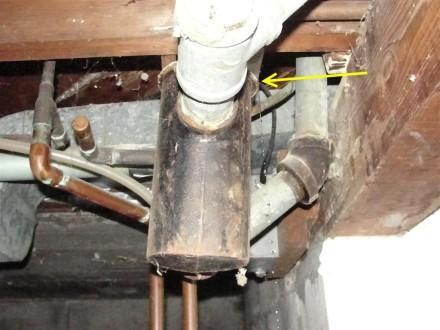
Here's a drum trap at a laundry sink.
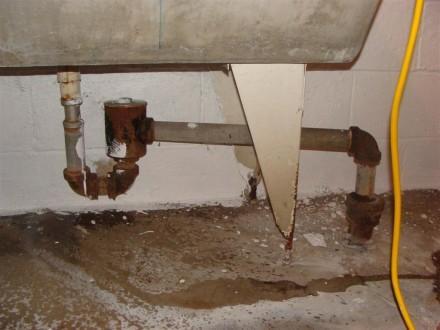
The drum trap at this next laundry sink had a severely corroded cap.
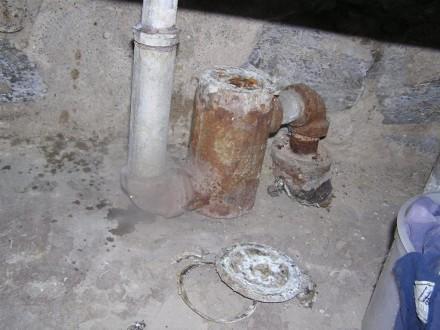
This next one shows a drum trap installed on its side, along with a bunch of those rubber clamp connectors that aren't supposed to be used.
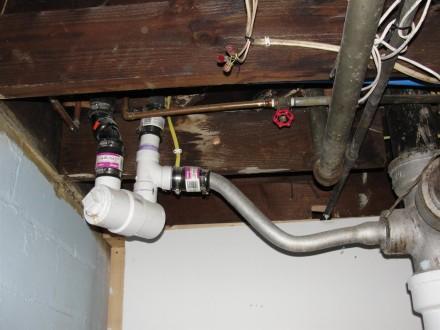
Below is one of my favorite photos of all time, which I've shared before. This drum trap had probably rusted apart or someone had to cut the bottom off to clean it out, so MacGyver fixed it with the bottom of a coffee can, glue, tape, and string. Spray painting the bottom red was also a nice touch.
